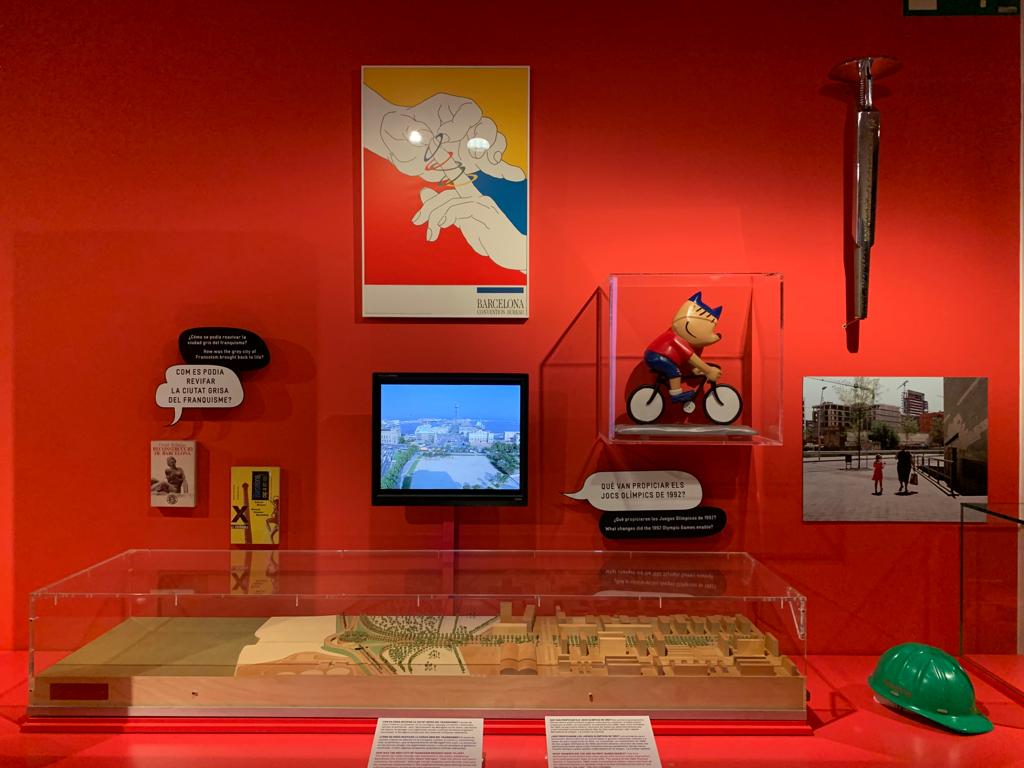Museu d’Història de Barcelona (Barcelona City History Museum)
The Museu d’Història de Barcelona (Barcelona City History Museum) is in the perfect spot to bring together centuries of history under one roof.
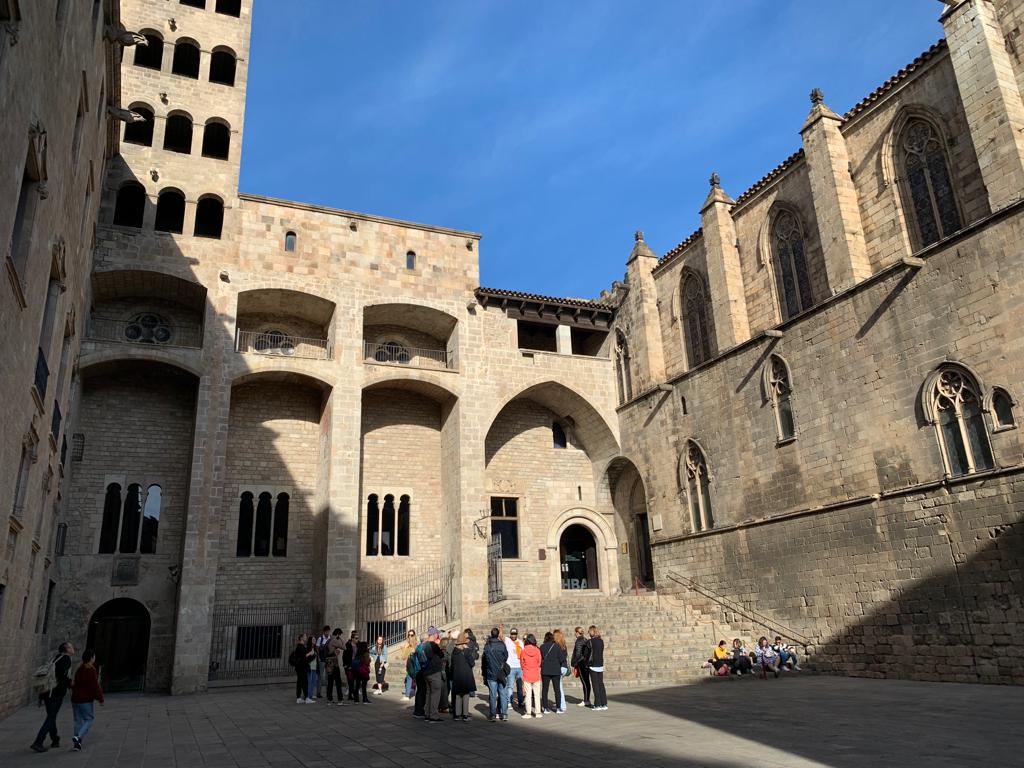

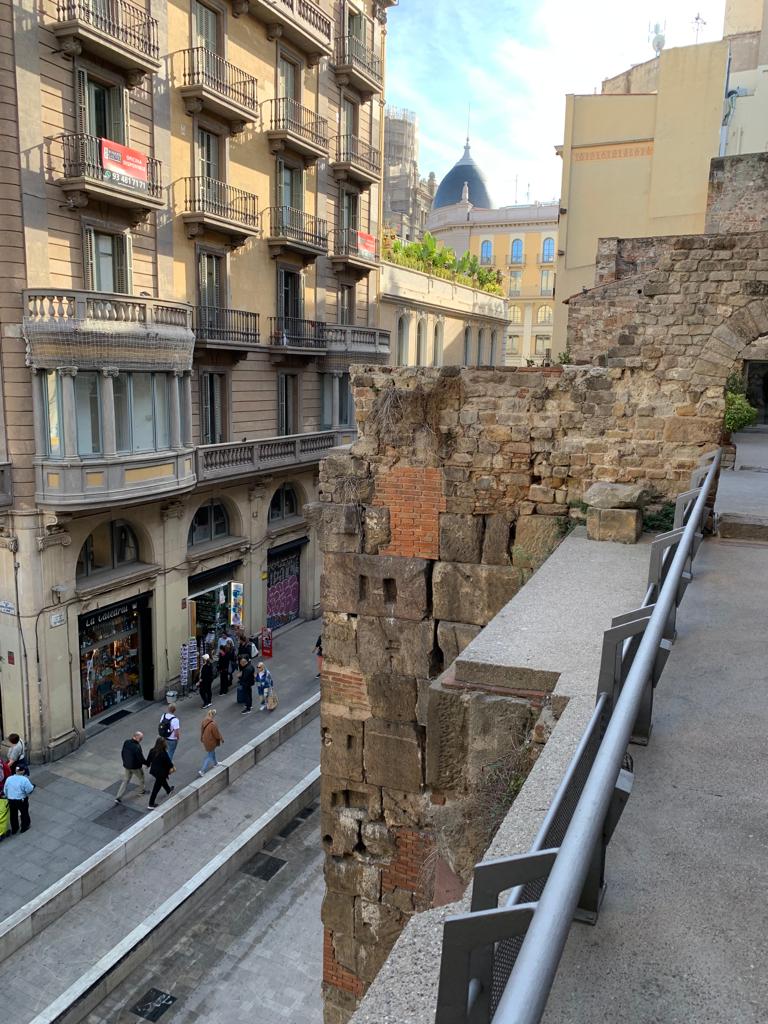
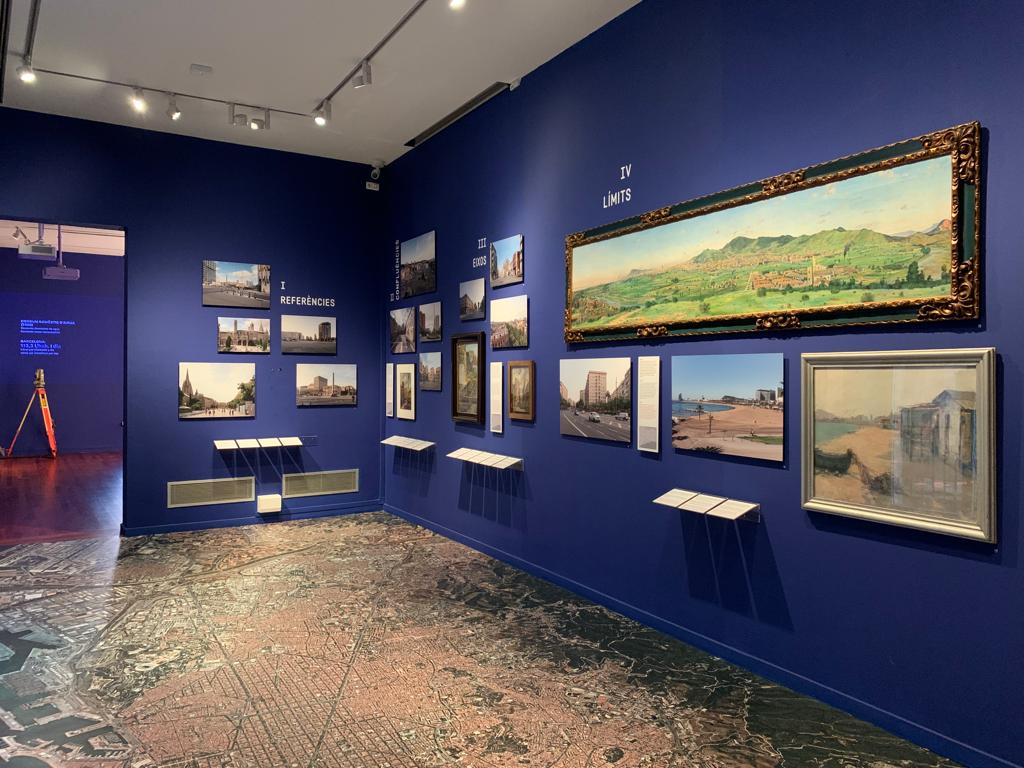

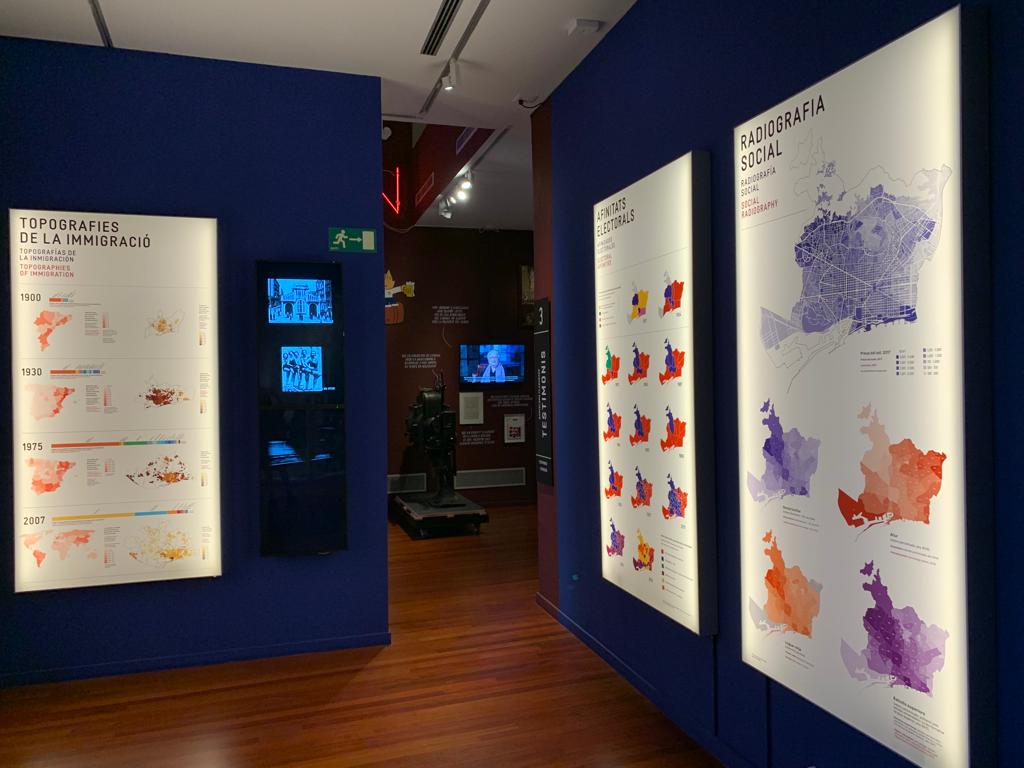
Museu d’Història de Barcelona (Barcelona City History Museum)
Today marks our final museum outing in Barcelona. After this it’s a quick detour to Andorra and then back to London. And as museum outings go, this one did not disappoint. The Museu d’Història de Barcelona (Barcelona City History Museum) is an interesting institution in an interesting spot.
If you have been reading the blog over the past few days, you will not be surprised to hear that the project to establish a city history museum in Barcelona goes back to the 1929 International Exposition. An event that shaped the city in more ways than one. The municipality organised a temporary exhibition at this time. Shortly afterwards in 1931, two related events created a perfect permanent home for a history museum. The first was the relocation of a historic building to make way for Barcelona’s suburban expansion, el Eixample. The Casa Padellàs, a late Gothic palace, was in the way of the Via Laietana. Rather than destroy it, it was taken down stone by stone to be rebuilt in the Gothic Quarter. That was the first event.
The second happened when the Casa Padellàs was being installed in its new location. Parts of the Roman city began to emerge underneath it. The Spanish Civil War interrupted any attempts at excavation, preservation and interpretation. But what ultimately emerged was about 4,000 square metres: an entire Roman city district. Later excavations also uncovered evidence of early Christianity in the city.
So between a salvaged historic building and a subterranean archaeological site, what better place for a city history museum? Particularly when the final piece of the puzzle, the building onto which the Casa Padellàs was grafted, is a medieval royal palace on the Plaça del Rei. The Museu d’Història de Barcelona opened in 1943.
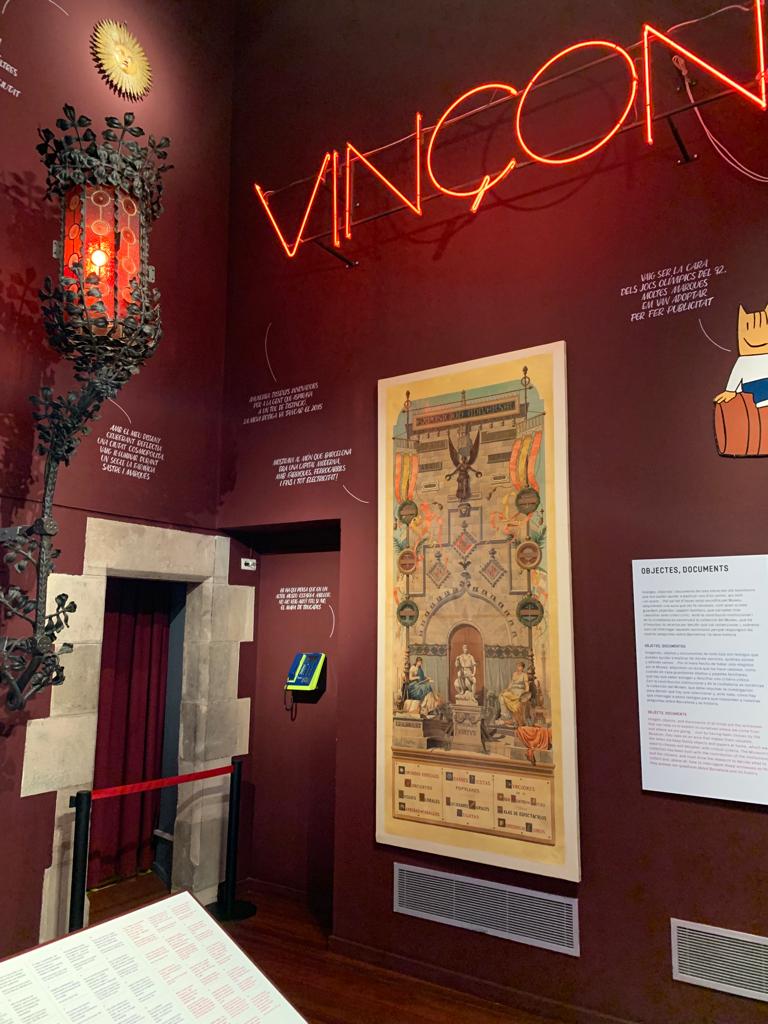

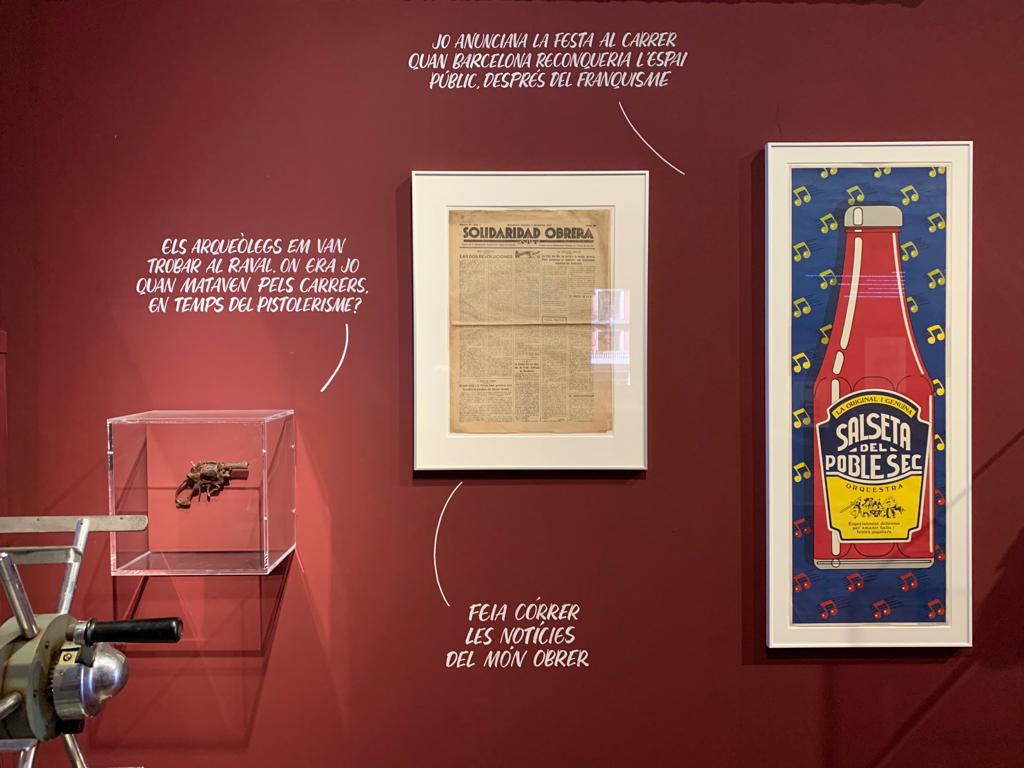
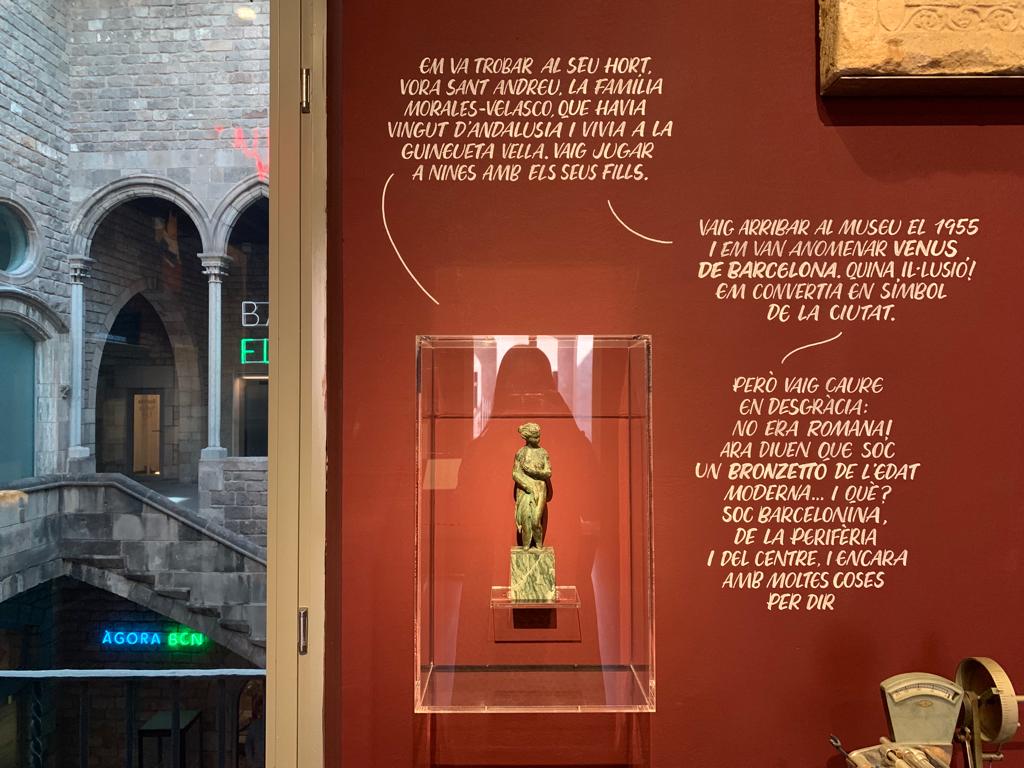

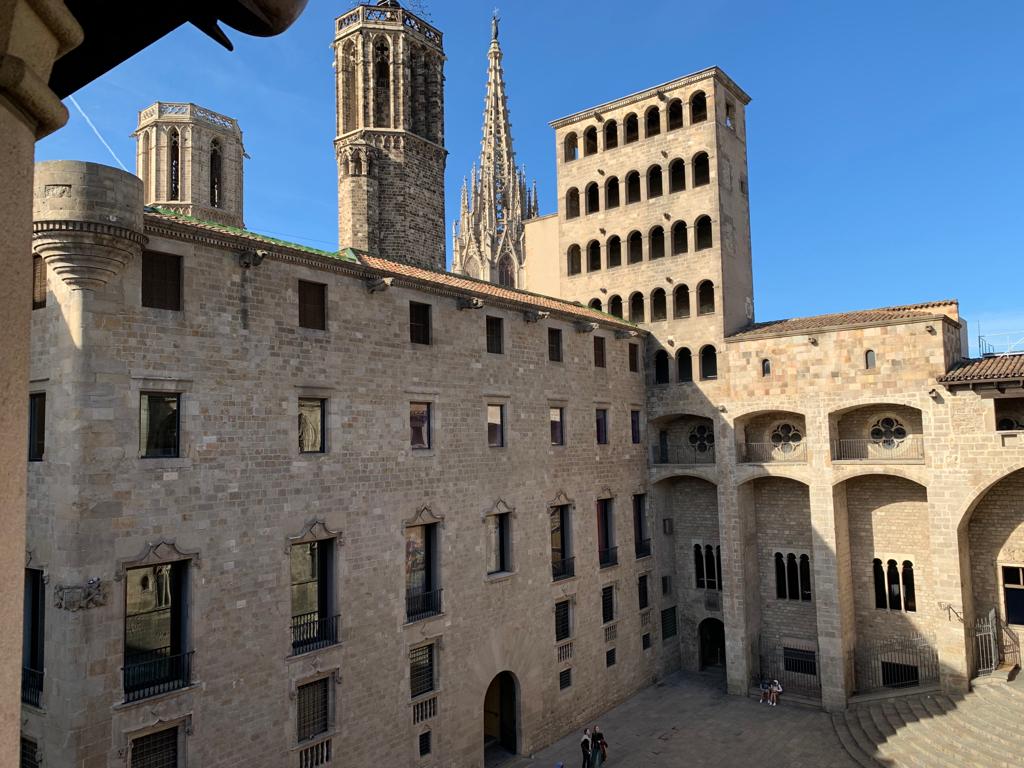
Visiting The Museu d’Història de Barcelona
This jumble of historic spaces is fascinating, but makes for a somewhat confusing visitor experience. I tried entering through the exit first: it’s much easier to spot than the entrance. I was pointed in the right direction by the staff member seemingly permanently assigned to do just that. The point I had tried to enter through was the former royal palace. The entrance is instead over in the relocated Gothic building. I purchased my ticket, stored my belongings in a locker and got going.
The layout didn’t get much easier from there though. I watched a quick orientation video in the Gothic palace. Then I had a walk around that building: frankly here the interpretation could be a bit better, and I’ve learned more about it retrospectively in preparation for this post. What is nice though is the opportunity to get outside to small balconies where you can see the historic fabric of the various buildings, and take in nice views of the Gothic Quarter. With a sense of the centuries of Barcelona’s history all layered over top of each other I was ready to start the museum proper.
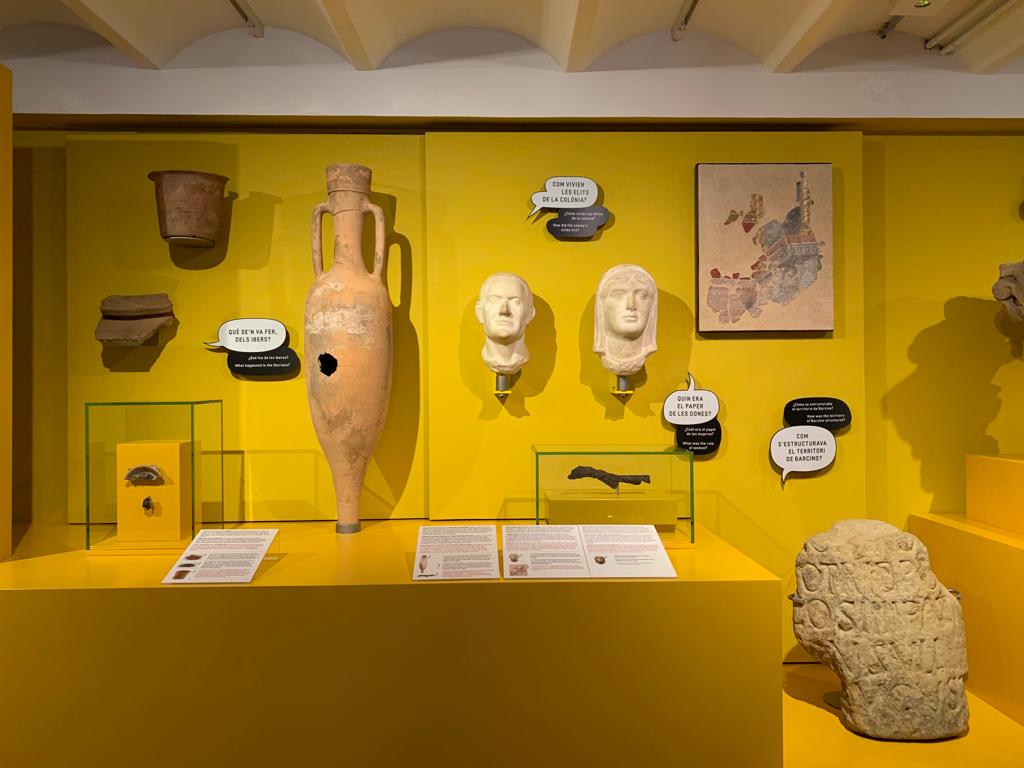
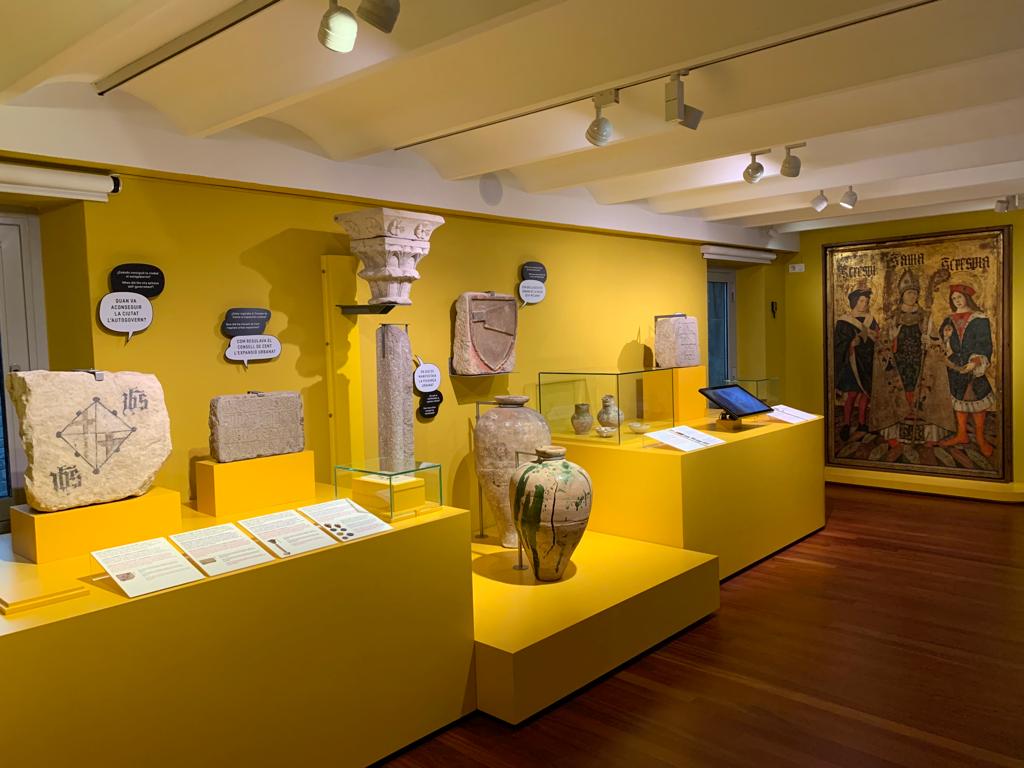
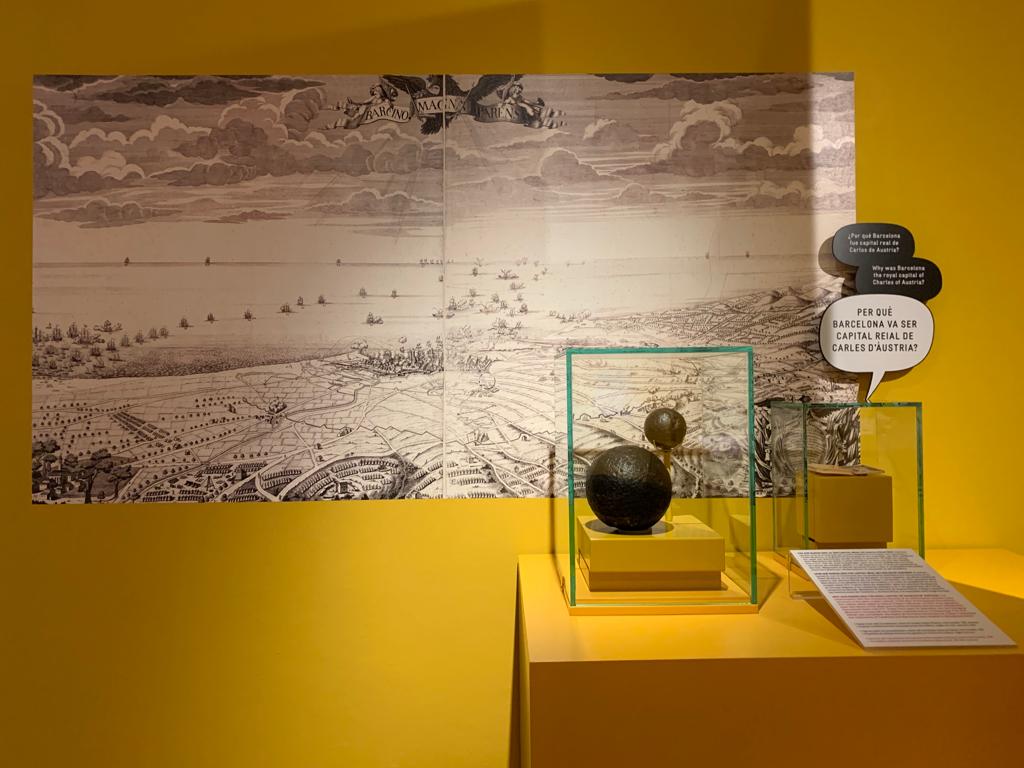

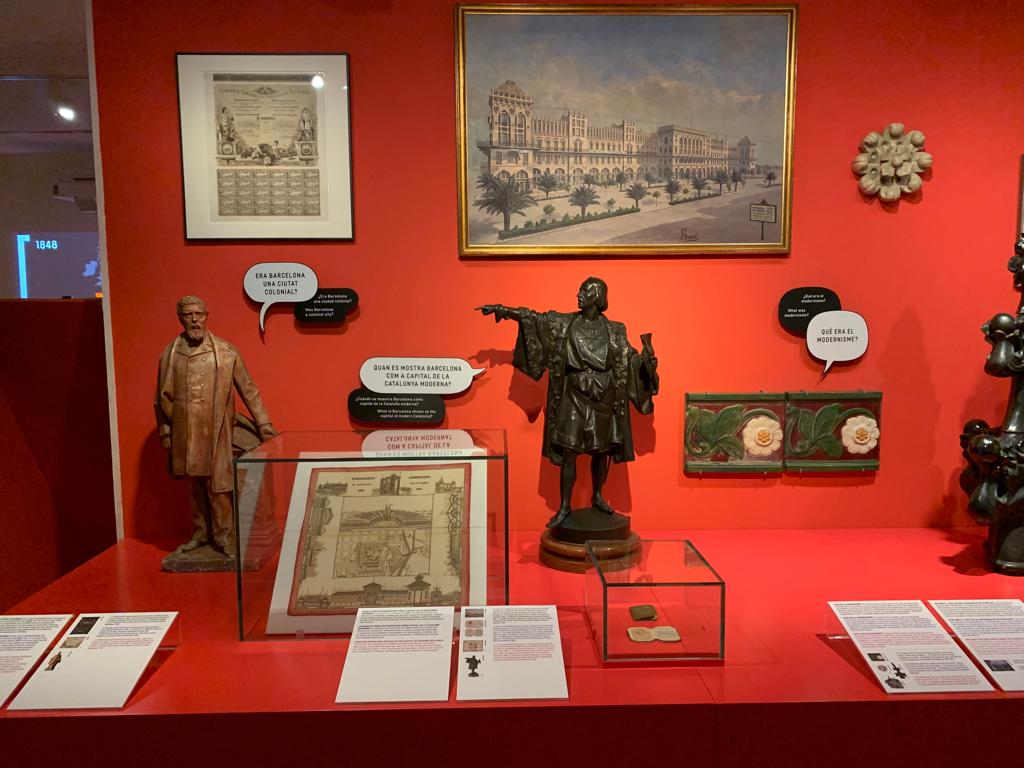
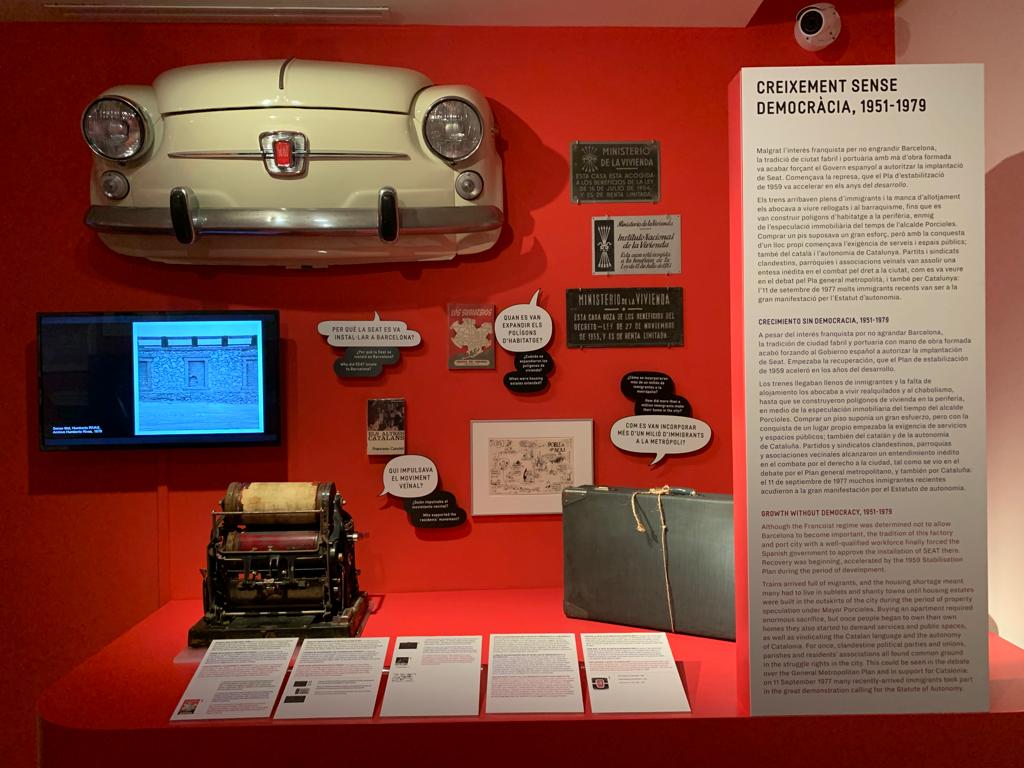
Barcelona Flashback
The main exhibition of the Museu d’Història de Barcelona is Barcelona Flashback. It’s a museologically interesting approach: accessible, engaging, and based on starting conversations rather than imparting facts. You would forgive me, however, for initially getting a different idea, based on this introductory text:
“Barcelona Flashback is an experimental exhibition of synthesis, in constant renovation, that shows the bimillenary trajectory of Barcelona through an interrogative historical reading method of documents, objects, architecture and landscapes.”
1. Barcelona Flashback: a history kit in 100 objects | Museu Historia de Barcelona | Ajuntament de Barcelona
Phew! Sounds like someone’s academic research proposal. But luckily the explanation and the thing itself are very different. Barcelona Flashback takes 100 objects (apparently, I didn’t count) and uses them to explore the city’s history. It’s organised into brightly coloured sections by period. Objects are grouped together, with questions or statements next to many of them. The bigger texts and questions are in Catalan, Castilian Spanish and English, but you have to be able to figure out the Catalan for other parts. The questions are things like:
- How did the elites of the Roman colony live?
- What was the social condition of the inhabitants of the Call (Barcelona’s Jewish Quarter)?
- How did the manual tradespeople gain political power?
It’s a very democratic approach to knowledge in the museum. The Museu d’Història de Barcelona isn’t asking us to remember key dates and facts from history. It’s asking us to apply our critical faculties: to think. How do these objects relate? What is different and similar between the lives of former residents of Barcelona and our own? Is this or that aspect unique to Barcelona, or are there parallels elsewhere? What stories can an object tell us about its owner(s), makers, time and place? Barcelona Flashback encourages us to think about the city’s history as many narratives from different perspectives, not just one linear thing. Great stuff, I really enjoyed it.

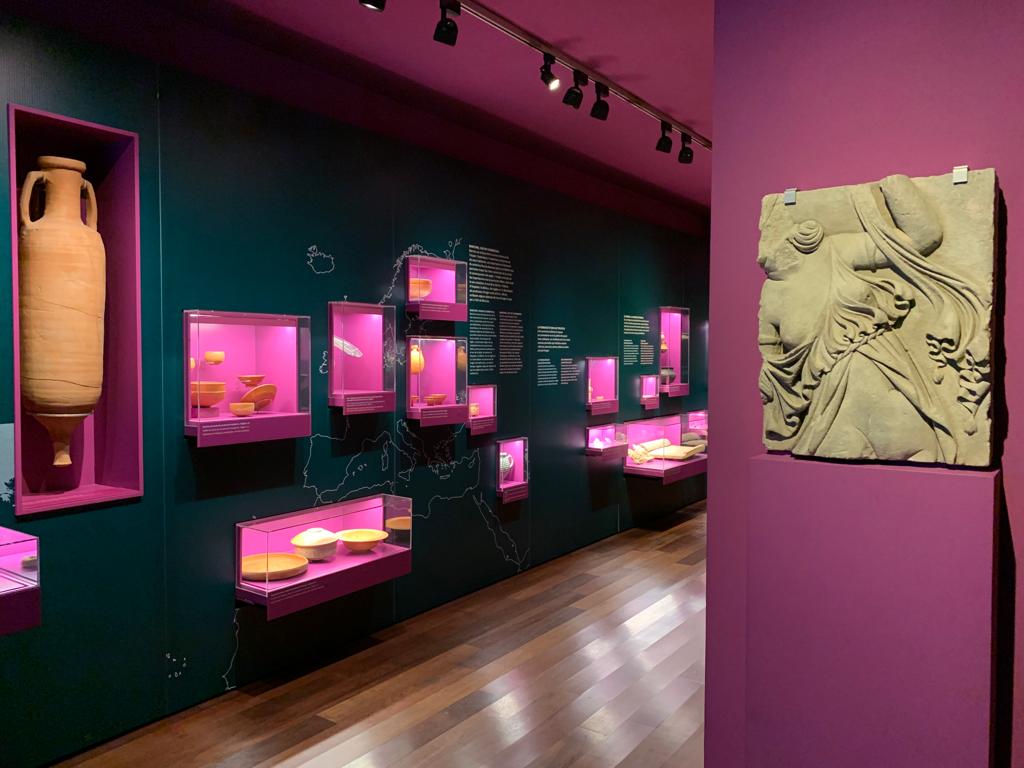



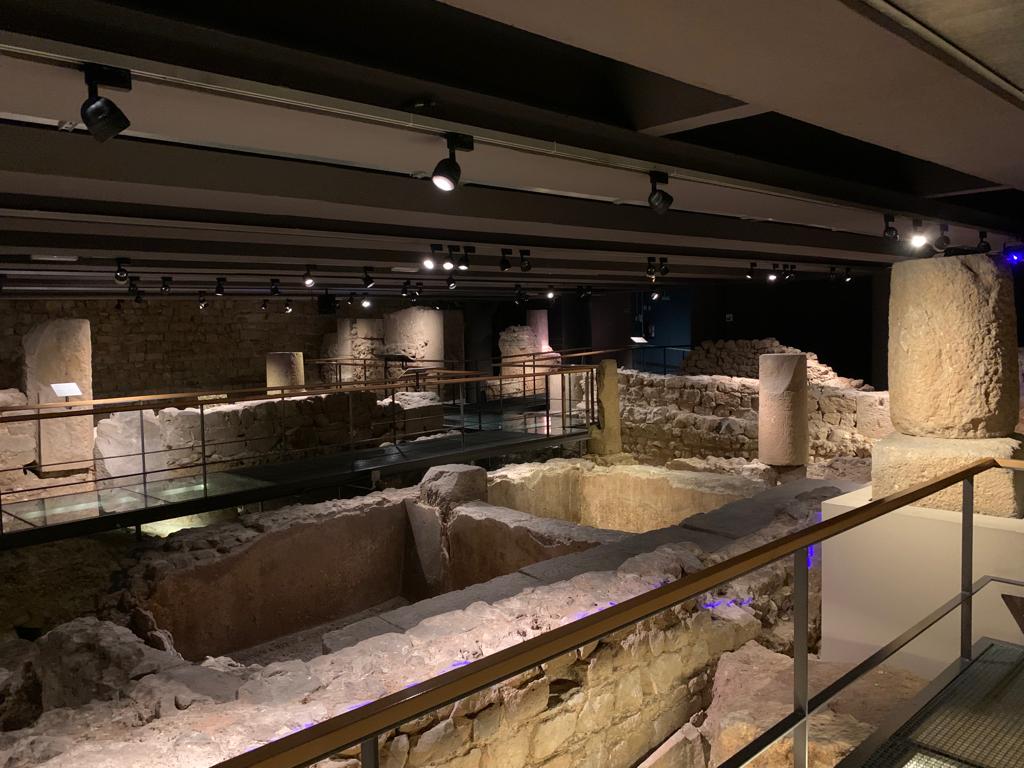
A Subterranean City
Once I’d made my way from the ancient world to the 20th century in Barcelona Flashback, it was time to head down to the archaeological site beneath the city streets. There is a small exhibition down here which tells some of the story, but it’s more about wandering around and seeing it. Long-time readers know I absolutely love exploring an archaeological site. It’s the first thing I did when I arrived in Reykjavik. I couldn’t get enough of it in Peru. And this was a lovely way to finish my trip to Barcelona.
The Roman site under the Museu d’Història de Barcelona is very much an urban one. There are a lot of shops, workshops and factories, and we can tell what a lot of them did. There is a wine merchant with huge ceramic vessels sunk into the floor. A busy Roman laundry. And even a salted fish and garum manufacturers. For those not familiar with garum, it was the everyday condiment of the Roman world. Like ketchup, but made from the liquid fish expels as it ferments. Yummy. Regardless, walking over garum vats gave this would-be archaeologist a little thrill.
The Museu d’Història de Barcelona have done a good job of constructing a logical path through an enormous site. As you walk through it you walk through history. You start very much in the Roman world. But at some point Christianity starts to emerge, and you find yourself peering into a baptistery. Then a bishop’s palace. Sometimes the Roman and early Christian spaces exist together, like those pictures that morph into something else if you squint a little. By the time you emerge into the royal palace, you’ve likely had your fill of archaeology but come away with a better understanding of how the Gothic Quarter evolved.
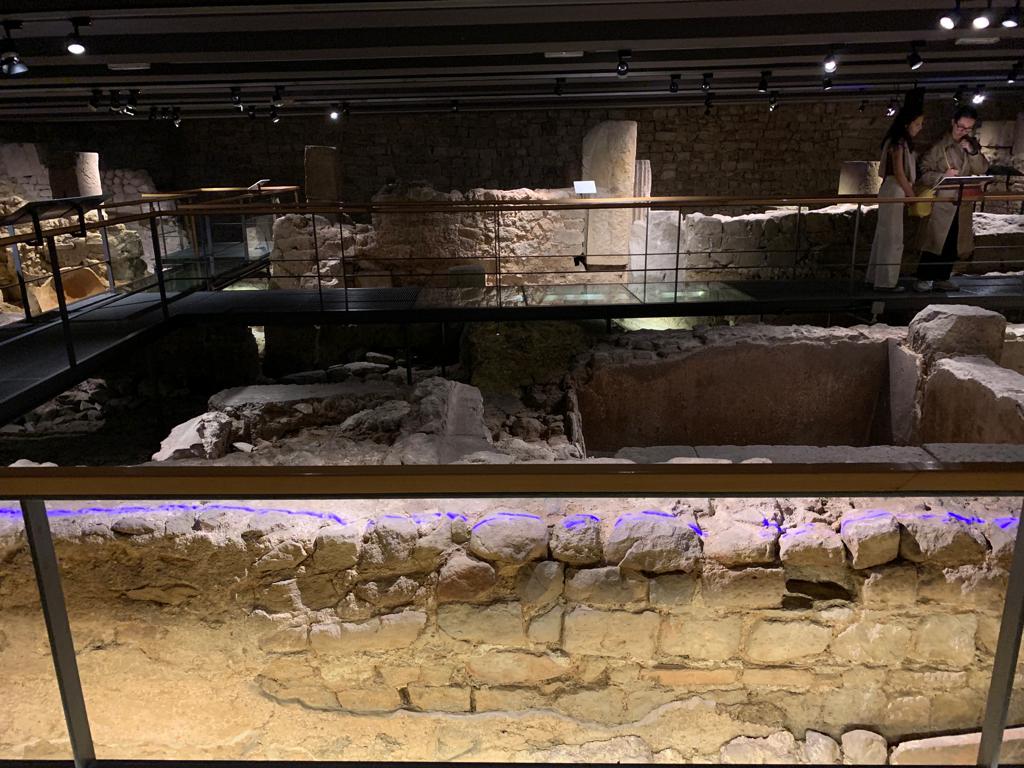
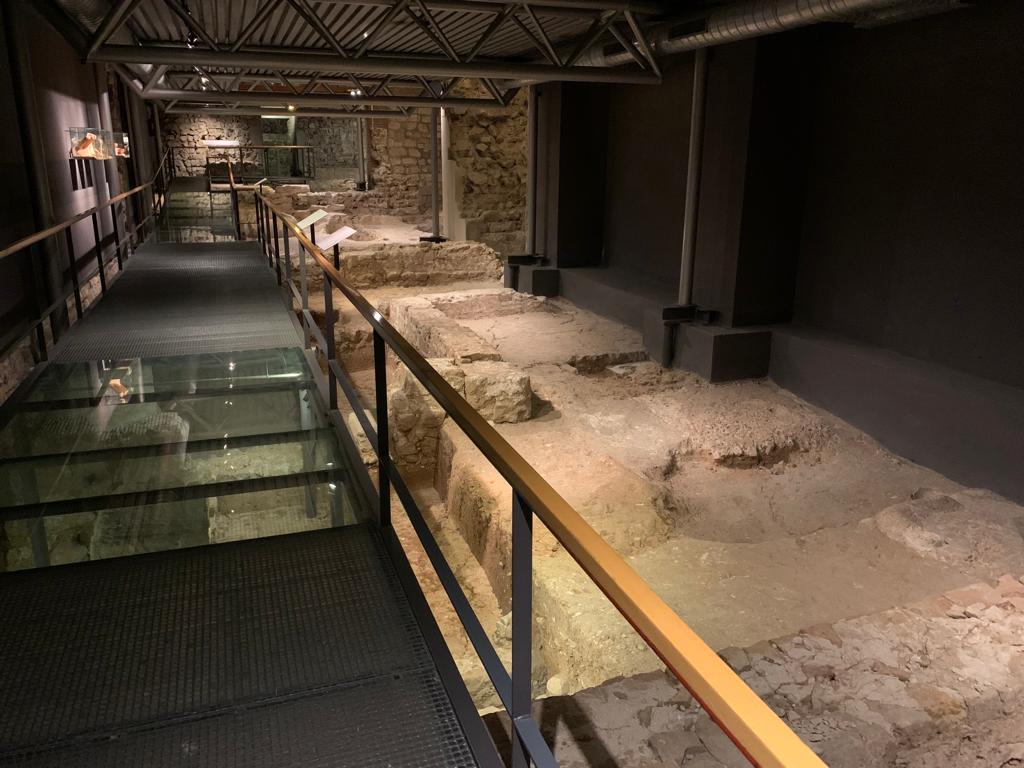

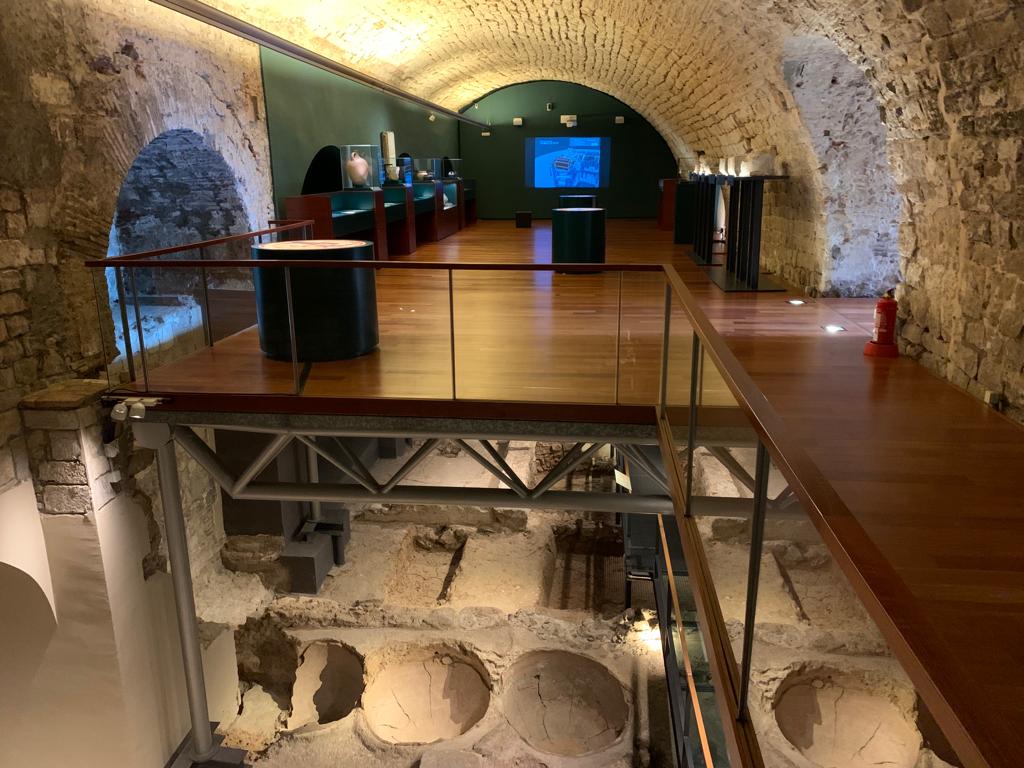


Farewell to the Museu d’Història de Barcelona
And so emerging into the royal palace, there’s a bit more to cover before we actually exit correctly back onto the Plaça del Rei. But this is also about the space itself: this part of the museum includes a 14th century hall called the Saló del Tinell, and a chapel devoted to Saint Agatha. The exhibitions here are a little like an afterthought compared to Barcelona Flashback: museologically less interesting, and either swallowed by or dominating the spaces they inhabit.
I indirectly mentioned the Saló del Tinell in my last post. There is a little window up in the top corner which is the connection between this museum and the Museu Frederic Marès. The Saló del Tinell is impressive, but if you’re not particularly interested in history I think you actually get a good enough view of it from the Museu Frederic Marès. You don’t often see such big halls before Gothic architecture opened up the walls to allow light in, so it is unusual in that respect.
I think all in all this rambling final section encapsulates my experience of the Museu d’Història de Barcelona. A little confusing. At times a tad disconnected. A varied experience: from contemporary approaches to museum design to the sprawling ancient city to the rather underwhelming royal palace. But that’s the thing about cities like Barcelona. They’re not just one thing. And their histories are not neat and nicely contained in little boxes of different periods. Thanks to the Museu d’Història de Barcelona for this timely reminder to apply my critical faculties to understanding these complexities.
Salterton Arts Review’s rating: 3.5/5
If you see this after your page is loaded completely, leafletJS files are missing.

